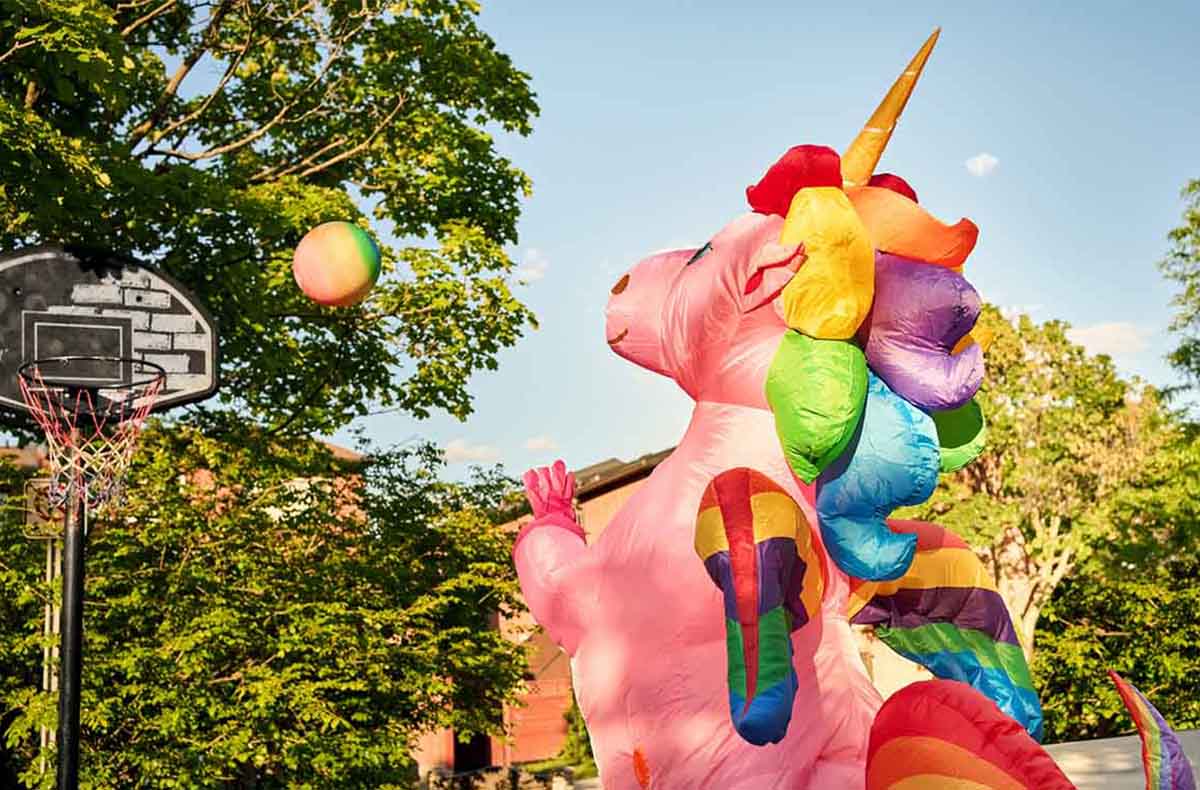
Entering the country of Qatar—particularly the capital city of Doha—you cannot help but feel like you are experiencing a small piece of something amazing. From the sight of the giant lamp bear (an iconic multi-million dollar art piece created by Swiss visual artist Urs Fischer) at Hamad International Airport upon arrival to the drive around the Doha Corniche to West Bay, the wonders and beauty of the Persian Gulf’s blue-green water are enchanting.
I felt the joyful human spirit of anticipation as I arrived in the country for the Qatar 2022 FIFA World Cup. After six years of visiting the country, my emotions were high, keyed up by excitement to witness all of the changes the country has undergone in preparations for hosting a mega sporting event in action. The $300 million infrastructure projects approved by the Qatari government led to substantial renovations to the roads and highways, with technological advances such as LED signage and billboards greatly modernizing the commuter experience in the city.
A Community Linked by the Love of Football/Soccer
During the FIFA World Cup group stage (November 20th – December 2nd), over 1.5 million fans visited the country. The citizens and residents of not only Qatar, but the entire Middle East and Northern African (MENA) region served as amazing hosts with an effervescence full of hospitality and entertainment. Outside of Qatar, the highest number of international visitors (via the Hayya card registrations) came from Saudi Arabia, India, the United States, the United Kingdom, and Mexico.
By the start of the tournament, over 3 million tickets had been sold for the mega event. Fans from all over the globe converged on Doha to experience the highest level of soccer while also being exposed to the Arabic culture in Qatar. Throughout the FIFA Fan Zones and spectator areas, visitors mingled with Arab locals who were in high numbers at each of the matches. I was impressed by the collegiality of the fans from different nations who danced, sang together, took pictures, and traded flags during the lead-up to the matches. Even more surprising, this festive behavior would continue deep into the night—as late as 3am local time—in locations such as the FIFA Fan Festival at Al Bidda Park and the Souq Waqif, with fans celebrating by drinking Qatari coffee or smoking shisha.
World-Class Stadium Experience—With Exceptions
Each stadium opened three hours before the matches and was easily accessed via Doha’s newly created metro rail system. Once you arrived on location at the stadium site, the event organizers implemented a system of crowd management based on the latest research of queuing theory. As the average stadium was anywhere from 40,000 to 80,000 fan capacity, we were funneled into a specific area and allowed to enter the facility based on the gate assignment from our ticket. While this process could take anywhere from 45 minutes to an hour, there were DJs playing music, live bands, the La’eeb Hype Show, and public bathrooms (with running water—an upgrade in comparison to Russia 2018) along the routes from the parking lots and metros. There was an impressive culturally-nuanced musical selection along the line/queue route for pre-game, half-time, and post-match. The event organizers hired multiple DJs at each stadium site who played culturally-relevant musical selections to the competing teams. For instance, Reggaeton (Latin America) and Afrobeats (African Continent) were played during the lead-up to matches involving teams from those specific regions. This gave each of the venues a concert-like atmosphere, which was a nice touch of personalization from the event organizers.
I felt the event organizers went the extra mile for the diversity and inclusion of all different types of patrons for the FIFA World Cup. The stadiums featured separate male and female prayer rooms, where fans could participate in their prayer rituals. And there was a marked investment in accessibility features in the stadiums, such as sensory rooms for autistic fans, availability of audio-descriptive commentary equipment, and infrastructure support and services for disabled fans.
Within the stadiums, the views are phenomenal and the sightlines provide an exemplary live experience for the matches. All of the stadiums are air-conditioned, and in some sections, there’s cool air flowing from underneath the seats. For the general public, the meal options were limited to pre-packaged items such as shawarma, hot dogs, hamburgers, and potato chips. For refreshments, the options were Coca-Cola, Sprite, Fanta, bottled water, and Bud Zero (a 69-calorie non-alcoholic beverage) since the general public was unable to purchase alcoholic beverages at the stadiums. However, for those lucky enough to score a VIP (Very Important Person) ticket, access to alcohol such as Taittinger Brut Reserve Champagne, Budweiser, Stella Artois, Corona Extra, Sauvignon Blanc, Rose, and a Bordeaux was available within the hospitality area. There was a level of hospitality even higher than VIP called VVIP (Very Very Important Person) reserved for Qatari Royals, celebrities, and government heads of state. This was highly exclusive and expands on the highest levels of hospitality, including an abundance of top-shelf wine and spirits among other commemorative amenities.
Lastly, the police, security, and volunteer workforce were abundant throughout my time at the stadiums and fan festivals. I always felt safe and comfortable during my time in Doha and I was equally impressed with their patience and due diligence to provide guidance and support as I navigated the maze of queues for stadium entrance and explored notable locations such as the Katara Cultural Village, the Winter Wonderland at Lusail, the Pearl Island, the Qatar National Convention Center (QNCC), and Doha Exhibition and Convention Center (DECC), and the luxurious Al Hazm. Overall, I felt there was a notable investment in customer service from police, security, and volunteers, which went a long way towards ensuring my satisfaction at the events.
Global Citizenship in Doha
In the six years since my first visit to Qatar, I have gone from visitor to ex-pat exploring the country. Reconnecting with former students, colleagues, and friends during the FIFA World Cup has been a pivotal life event in my career. These relationships have enhanced my understanding of global citizenship and the necessity for cultural agility. Attending the Football of the World Stage: What about Africa? event hosted by the College of Engineering and Science at Hamad Bin Khalifa University (HBKU), I was able to converse and share best practices with global sports scholars and practitioners. Topics ranged from the continent’s football landscape and its position on the global stage—from the five African nations participating in the FIFA World Cup to Egypt’s joint bid with the Kingdom of Saudi Arabia and Greece for the 2030 FIFA World Cup. These types of opportunities have shaped my career and allowed me to improve my craft as an academic.
Overall, the 2022 FIFA World Cup experience has been everything I had hoped it would be. In my next and final installment for this three part series, I will focus on the sociocultural aspect of the Qatar 2022 FIFA World Cup and the legacy of the country post the hosting of the mega event. Watch this space to continue following along!



